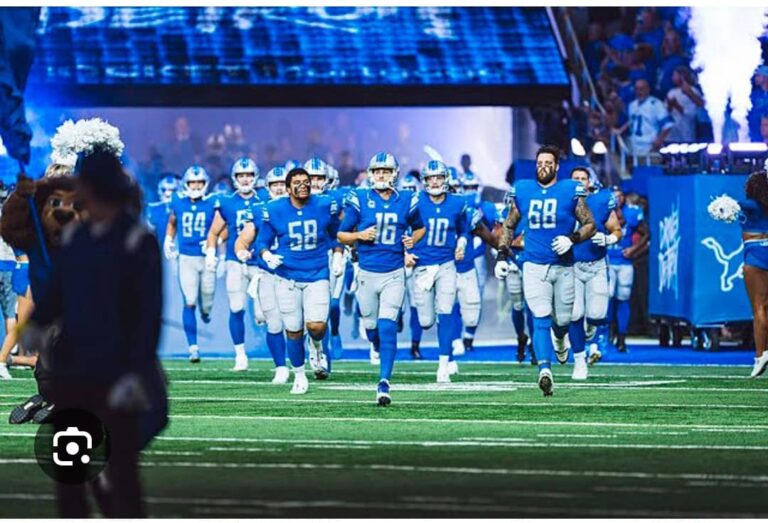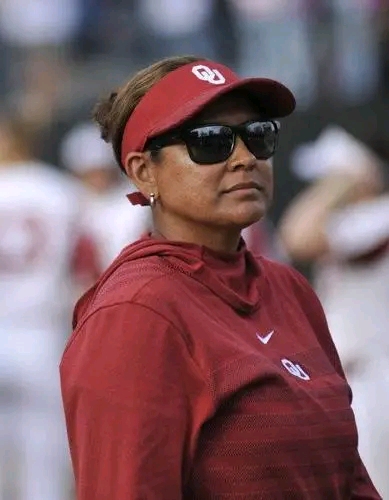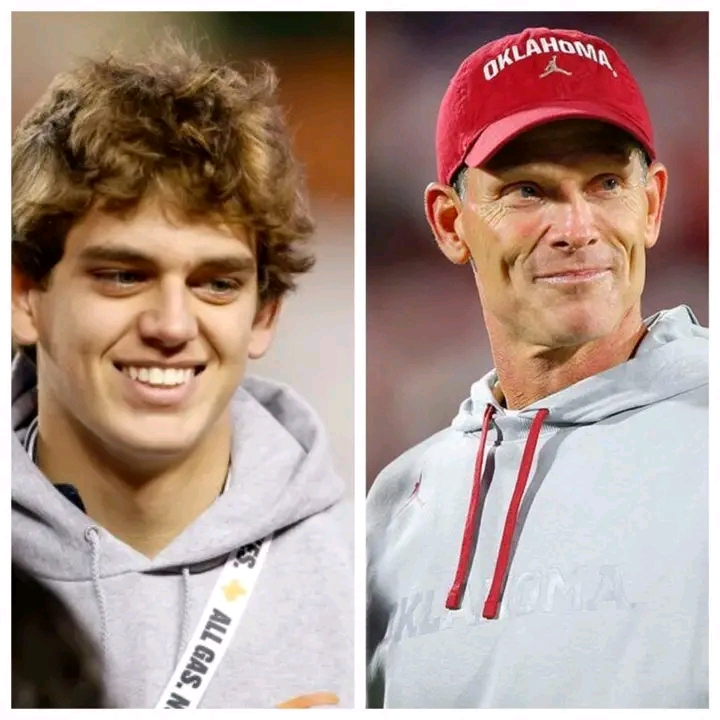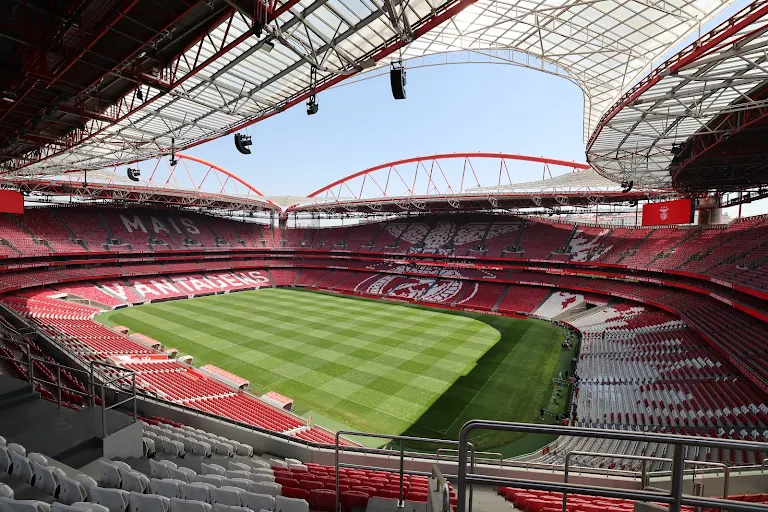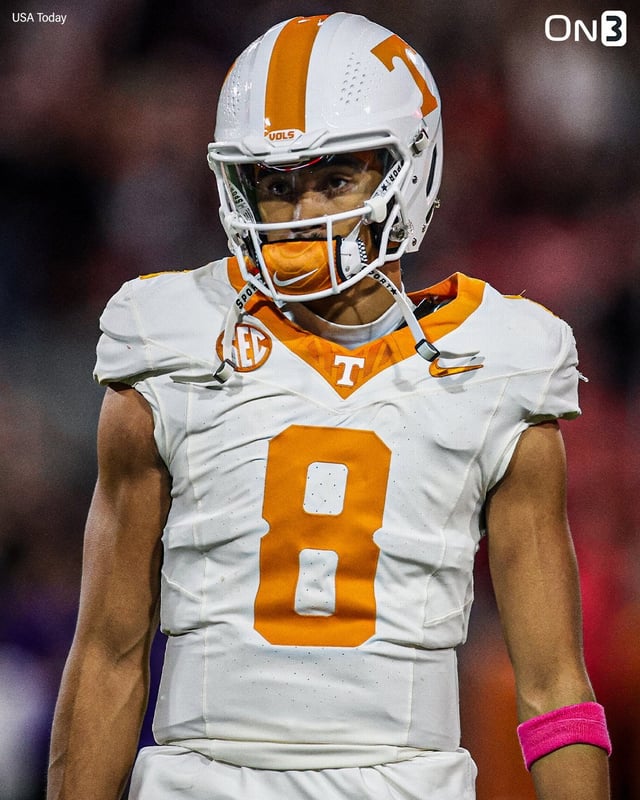
Nico Iamaleava, once considered one of the crown jewels of the 2023 recruiting class and a potential face of college football’s future, now finds himself in an unexpected limbo. After entering the NCAA transfer portal following a turbulent year at Tennessee, the highly-touted quarterback is navigating an uncertain landscape shaped by shifting program interests, dwindling suitors, and a Name, Image, and Likeness (NIL) market that appears to be adjusting to new financial realities. While programs such as UCLA, UNC, and Tulane had initially shown interest, all three have reportedly exited the race, leaving Iamaleava without a clear path forward as other programs wait for his NIL price tag to drop.
Coming out of Long Beach Poly High School in California, Iamaleava was ranked as one of the top quarterbacks in the nation. His combination of elite arm strength, mobility, and poise made him a prized asset in the NIL era, with reports suggesting he secured a groundbreaking NIL agreement worth up to $8 million through Tennessee’s collective, Spyre Sports Group. This deal elevated not just his profile, but the expectations around his immediate impact at the college level.
Iamaleava spent most of his true freshman season backing up Joe Milton III, but flashed serious potential during limited action. He capped the season with a standout performance in the Citrus Bowl, leading to widespread belief that he would anchor the Vols’ offense moving forward. By the spring of 2024, he was officially handed the reins as QB1, and expectations in Knoxville soared.
However, the honeymoon period didn’t last long. Sources close to the program indicated that tensions began to rise between Iamaleava and Tennessee’s administration over the structure and delivery of NIL payments. As other collectives across the nation recalibrated their NIL operations in response to donor fatigue, IRS scrutiny, and uneven market performance, it became increasingly difficult for Tennessee to maintain the aggressive compensation structures that had initially lured top-tier talent. Iamaleava reportedly felt underappreciated and unsupported in his negotiations, leading to missed practices and a rift with the coaching staff.
By the end of spring football in 2025, Iamaleava had made the decision to enter the transfer portal. Initially, his entry generated immediate buzz. Power Five programs including UCLA, North Carolina, and Tulane all reached out, intrigued by his pedigree and playmaking potential. UCLA made sense geographically and stylistically, with a need at quarterback and proximity to Iamaleava’s Southern California roots. UNC, known for developing quarterbacks like Drake Maye, seemed an ideal match in terms of offensive fit. Tulane, while not a traditional football power, reportedly pitched a bold vision built around Iamaleava as the centerpiece of a high-octane offense.
However, within weeks, those three programs had all bowed out. Sources suggest that Iamaleava’s representatives were seeking NIL guarantees that exceeded $2 million annually—an amount most programs are unwilling or unable to commit in the current climate. UNC and Tulane reportedly balked at the price early, opting to pursue more affordable and system-fit options. UCLA held on the longest, but ultimately withdrew after internal assessments revealed that meeting Iamaleava’s financial terms would compromise commitments to multiple other players in their NIL ecosystem.
Now, with his most high-profile suitors off the board, Iamaleava faces a harsh reality. While he remains a rare talent with undeniable upside, the NIL gold rush that defined his recruitment two years ago has cooled significantly. Programs are more cautious with their spending, with many shifting NIL investments toward offensive lines, defensive depth, and retention of proven talent rather than banking on high-risk, high-reward quarterbacks with limited starting experience.
Several schools remain interested in Iamaleava, but they are reportedly in wait-and-see mode—willing to reengage only if his NIL demands come down to more manageable figures. Programs in the Big 12 and ACC have made discreet inquiries, and a few Group of Five programs are willing to build around him if the price is right. Still, none appear ready to outbid the field, especially as the post-spring transfer market becomes flooded with other quarterback options.
This saga reflects a broader reckoning across college football, as programs, collectives, and athletes grapple with the evolving economics of NIL. For players like Iamaleava, who were recruited in the early days of NIL when valuations were often inflated and collectives raced to outdo each other, the current market correction can be jarring. No longer is potential alone enough to command multi-million dollar deals—programs now expect performance, leadership, and alignment with team culture before investing heavily.
For Iamaleava, the next steps are crucial. Whether he chooses to recalibrate his NIL expectations or wait for a desperate program to meet his terms, he will need to weigh financial goals against the risk of stagnating in the portal. Sitting out a year could damage his long-term NFL prospects and dilute the momentum he once had as a blue-chip recruit. Conversely, finding a team where he can start, grow, and showcase his skills—even for less money—might reignite his trajectory.
The door isn’t closed yet. Iamaleava’s camp is reportedly open to renegotiation, and as summer workouts approach and depth charts crystallize, quarterback needs across the country could create new opportunities. But for now, one of the most talked-about names in college football is stuck in limbo—his future uncertain, his market shrinking, and the promises of the NIL era being redefined in real time.
